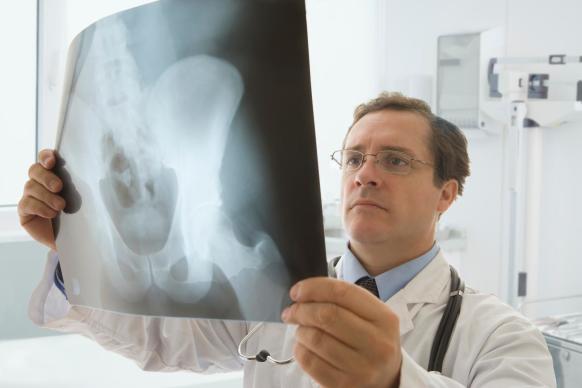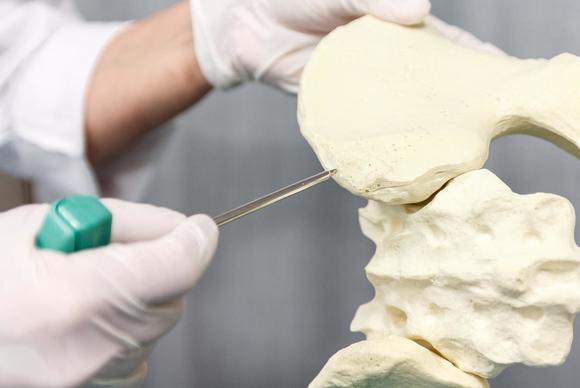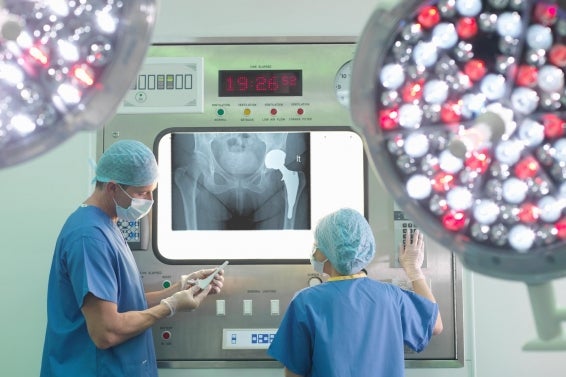View Providers

A Closer Look at Hip Replacement
The hip joint is one of the largest joints in your body. It bears your body weight and supports all kinds of movements. When you have hip problems, it affects your entire life. A hip replacement removes the entire hip joint and replaces it with an artificial joint. The goal is to restore pain-free range of motion and full function of your hip. Get
the facts so you’re prepared and know what to expect.

1. It’s time for hip replacement when pain decreases your quality of life.
Your doctor may suggest a hip replacement when your hip problems interfere with your life. Pain and stiffness that limit your activities, such as walking or bending over, is a reason to consider surgery. You also may need surgery if you have pain even at rest or during the night. Your doctor will need to know that you have tried other treatments—medicines and physical therapy—without relief before recommending surgery.

2. There are different types of artificial hips.
Most hip replacements are total replacements that remove the entire hip joint. In some cases, doctors may recommend a partial replacement. Most often, this removes and replaces only the ball of the thighbone. There are three general types of total hip replacements—cemented, uncemented, and a hybrid with both cemented and uncemented parts. Each has advantages and disadvantages so talk to your doctor about what’s right for you.

3. An artificial hip lasts about 15 to 20 years.
Hip replacements eventually wear out because artificial joints are not as durable as natural joints. It’s likely that you will need additional surgery within 20 years of having a hip replacement. But you can help prolong the life of your artificial hip. Start by maintaining a healthy weight. People who are overweight have a higher rate of joint failure. You should also get regular exercise to strengthen and stabilize your hip and take care to avoid falls.

4. You may be a candidate for minimally invasive surgery.
Doctors have made progress with hip replacement techniques over the years. Today, many doctors perform a minimally invasive version rather than traditional open surgery. In either case, a hip replacement is major surgery. However, your recovery will likely be shorter with minimally invasive surgery. Not everyone qualifies for this type of surgery. Ask your doctor and if you are a good candidate.

5. Hip replacement has risks you can manage.
Hip replacement is usually highly successful, but there are risks. They include bleeding, infection, blood clots, uneven leg lengths, implant failure, continued hip pain, and dislocation. To guard against blood clots, doctors often prescribe blood thinners—anticoagulants—for several weeks after surgery. Protect your hip by not crossing your legs, sleep with a pillow between your legs, and don’t bend your hips past 90 degrees during recovery. You also need to guard against falls.

6. Physical therapy is vital for full recovery and function.
You will likely stay in the hospital for 3 to 5 days after hip replacement. Recovery will involve several weeks of physical therapy and rehabilitation. This will improve your mobility and joint function. Some people need to stay a short time in a rehabilitation center after leaving the hospital. Full recovery can take up to six months. Talk to your doctor and find out what you can expect based on your type of hip replacement.

7. Preparing your home before surgery will make recovery easier.
When you are recovering at home, you need to prevent falls and make your life easily accessible. Consider adding safety bars to your shower and toilet area. Get a raised toilet seat and a shower bench. Also, consider attaching a shower hose or use a handled sponge to bathe. Use a reacher to pick up objects without bending over. Make sure stair railings are stable and take up area rugs during recovery. Your doctor’s office can arrange a home consultation to help you.

8. The majority of hip replacements are successful.
Having realistic expectations for life after hip replacement is important. Your new hip will feel different at first. It may feel stiff compared to your natural joint, but this tends to improve with time. After recovery, most people return to normal daily activities without pain. Doctors usually recommend avoiding running and other high-impact sports. You can expect to return to golf, walking, biking, hiking, swimming, and other low-impact sports and activities.




